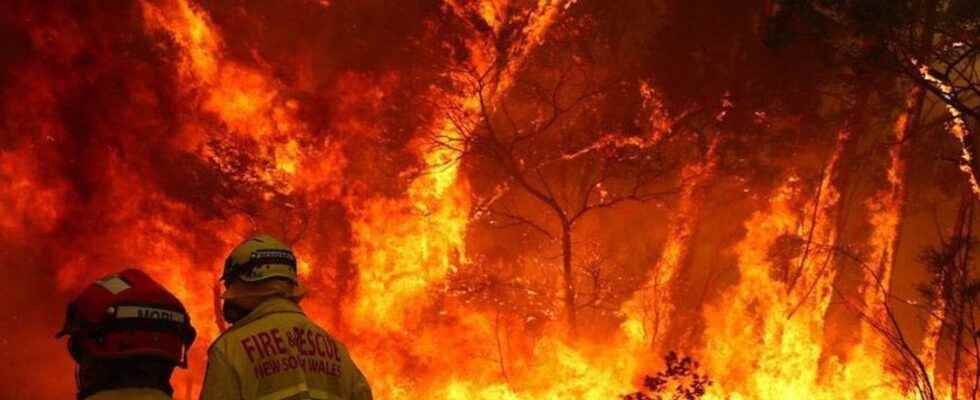A study published on January 10 reports the devastating impact of cold sores on the health of Australians. The latter would have been exposed to high doses of fine particles during gigantic fires that devastated part of the country between October 2019 and February 2020.
Two years later, researchers were able to establish the overall health impact of the megafires that ravaged Australia between October 2019 and February 2020. A team of scientists led by Ailish M. Graham, from the University of Leeds, thus modeled and analyzed the rate of fine particles cleared during these gigantic fires. The local population would thus have absorbed far more fine particles than the average tolerated and considered safe by the World Health Organization (WHO). According to an article published on January 10, 2022 on the website of theAmerican Geophysical Union, about 30% of deaths from megafires are thought to have been caused byinhalation death materials particles, harmful to health.
A season of devastating fires
Australians were quick to call the 2019-2020 fire season a BlackSummer (black summer). The fires ravaged 186,000 square kilometers of land, destroying ecosystems and threatening endangered species. The human toll is heavy: 33 dead, and 450 deaths attributed to smoke inhalation. The megafires affected many parts of Australia, particularly on the western and northern coasts of the country. For four months, between 750 and 830 million tonnes of CO2 were thus issued in theatmosphere, while Australia produces “only” 526 million tonnes annually.
The study explains that fine particles (designated PM2.5) emerging from the megafires of the BlackSummer would have accounted for 70% of all fine particles between Brisbane and Melbourne, two major Australian cities more than 1,700 kilometers apart. These particles, with a diameter of less than 2.5 micrometers, are dangerous and come from different sources, such as cigarettes or gas vehicle exhaust, and can cause heart or respiratory disease. Researchers attribute 171 deaths to fine particle inhalation from the 2019-2020 fires: 65 counted in Sydney and 23 in Melbourne.
The scientists’ conclusion sounds the alarm. These situations are likely to increase, while the global warming causes long periods of drought in Australia. On January 13, 2022, the meteorologists were pointing the unprecedented heat wave impacting the country, with temperatures reaching 50.7°C, a record since 1960.
Ouch…
Western Australia???????? is scorching right now with temperatures hitting a staggering +50.7°C (123°F).
This ties the highest ever temperature measured in the Southern Hemisphere (and equals the Australian all-time record from 1960). pic.twitter.com/aL0k0H9b8V
— Scott Duncan (@ScottDuncanWX) January 13, 2022
Global warming, one of the sources of the problem
The season of fires (bushfire season) is not a recent phenomenon in Australia. The outbreaks of fires are thus recurrent when summer begins, between December and February. There are several fires each year during this period, recorded since the 18thand century, the dry climate making the vegetation easily flammable and conducive to this phenomenon.
Researchers conducted a study, published in March 2020 in Nature, on the potential impact of global warming on the occurrence of megafires in Australia. Thus, the risk of extreme fires would have quadrupled since 1979 and multiplied by 9 since 1900. The disruption of the climate leads to a 30% increase in the outbreak of wild fires. While Australia is one of the main countries affected, other regions of the world are under threat from large-scale fires. In 2020, Oregon and Northern California were engulfed in flames, while in 2021, California was experiencing a fire season again unprecedented.
However, several solutions are being examined to combat the spread of these devastating megafires. An Australian company, Fireball International, should launch in the course of 2022 a satellite in permanent communication with terrestrial relays. He could thus report to the authorities a possible fire a few seconds after a departure of fire. Many academics and meteorologists have welcomed the initiative, in view of what could make it possible to avoid these dramatic events.
Interested in what you just read?
